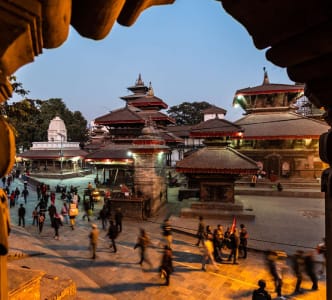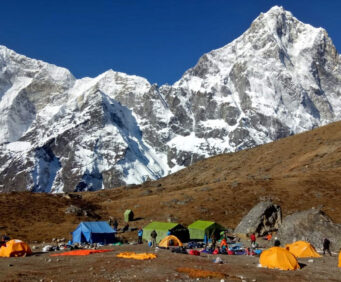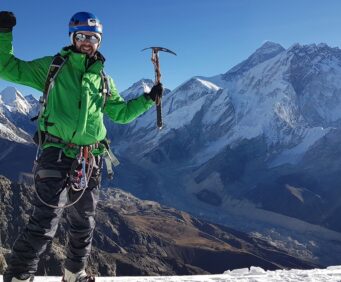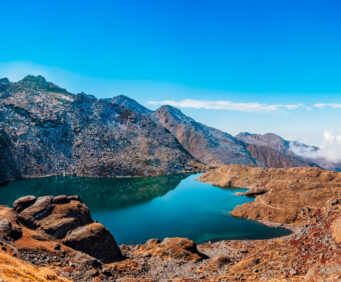
Short Annapurna Base Camp Trek 2025: Complete Guide to a Memorable Himalayan Adventure
10th August, 2025 - Posted By: Himalayan AbodeNepal’s Annapurna Base Camp (ABC) Trek is a bucket-list journey for trekkers worldwide, famed for its dramatic mountain vistas, vibrant local culture, and accessible routes. The Short Annapurna Base Camp Trek is a perfect choice for trekkers who want to experience the grandeur of the Annapurna region within a compact timeframe of about 7 days. It offers a rewarding little Himalayan adventure, blending natural beauty, cultural encounters, and manageable trekking difficulty—ideal for those with limited time or looking for a moderately challenging trek.
Why Choose the Short Annapurna Base Camp Trek?
The classic Annapurna Base Camp trek usually spans 9-11 days, but the short version compresses the experience into about a week without missing the stunning highlights. You get to explore beautiful villages, rhododendron forests, suspension bridges, and mountain panoramas, culminating in the awe-inspiring Annapurna Sanctuary and Base Camp at 4,130 meters (13,550 feet).
This trek is suitable for moderately fit hikers who want to avoid longer, more strenuous routes but still crave unforgettable Himalayan scenery and cultural richness. It’s excellent for first-time trekkers as well as seasoned adventurers looking for a quick but fulfilling Himalayan escape.
Trek Highlights and Attractions
- Mesmerizing Mountain Views: Up-close panoramas of iconic peaks like Annapurna South (7,219m), Machhapuchhre (Fishtail, 6,993m), Hiunchuli, Gangapurna, Dhaulagiri, and Nilgiri.
- Diverse Landscapes: The route cuts through tropical forests, terraced fields, alpine meadows, and rugged rocky terrains.
- Cultural Immersion: Interact with local Gurung and Magar communities in charming villages such as Chhomrong and Sinuwa. Taste traditional foods and experience local hospitality.
- Annapurna Sanctuary: The breathtaking natural amphitheater surrounded by towering Himalayan giants, offering an unparalleled setting for Base Camp.
- Hot Springs: Relax at Jhinu Danda’s natural hot springs after long trekking days.
- Suspension Bridges & Waterfalls: Cross picturesque wooden suspension bridges hanging over rushing rivers and pass by scenic waterfalls.
Detailed Itinerary for Short Annapurna Base Camp Trek
Day 1: Arrival in Kathmandu
Arrive at Tribhuvan International Airport, Kathmandu. Prepare your trekking permits and equipment. Overnight in Kathmandu.
Day 2: Drive to Pokhara (Approx. 6-7 hours)
Fly or drive to Pokhara, the gateway to Annapurna treks. Enjoy the lakeside city views and prepare for the trek.
Day 3: Drive from Pokhara to Ghandruk and Trek to Sinuwa
Start the trek from Ghandruk, walking through farmlands and small villages to Sinuwa. The first day is moderate with a mix of flat and uphill trails.
Day 4: Trek to Deurali
The trail is quite flat and goes through the forest and later slightly goes down reaches Bamboo and continue trek to Deurali passing tiny villages Dovan and Himalaya respectively.
Day 5: Trek from Deurali to ABC
Wake early to ascend and reaches MBC, from where the trail slightly goes up and arrives the ultimate destination ABC. Stay overnight with a spectacular view in a tea house
Day 6: Trek to Annapurna Base Camp (4,130m) to Bamboo
A longer day with steep ascents, hiking through villages including Chhomrong and bamboo forests. Stay overnight in a tea house.
Day 7: Descend to Jhinu Danda (1,780m) and Pokhara
Trek downhill to Jhinu Danda, relax in the natural hot springs. Complete the descent to conclude the trekking part, and drive back to Pokhara for a well-earned rest at Lake Side.
Day 8: Return to Kathmandu or onward travel
Fly or drive back to Kathmandu or continue your Nepal travels.
Permits You Need for the Annapurna Base Camp Trek
- Annapurna Conservation Area Permit (ACAP): Mandatory to protect the region’s ecology. This permit costs approximately $30 and can be obtained in Kathmandu or Pokhara.
- Trekkers’ Information Management System (TIMS) Card: A safety tracking system required for all foreign trekkers, costing about $20.
Permits must be carried at all times during the trek and are non-transferable. Most trekking companies will arrange these permits for you as part of their packages.
Best Time to Trek the Short Annapurna Base Camp
The best trekking seasons are:
- Spring (March to May): Blooming rhododendrons, clear skies, and moderate temperatures make spring the most popular trekking season.
- Autumn (Late September to November): Post-monsoon season with crisp air, stable weather, and spectacular mountain visibility.
Avoid monsoon season (June to August) due to heavy rainfall and slippery trails. Winter (December to February) brings cold weather and possible snowfall, making higher elevation camping uncomfortable but still possible for well-equipped trekkers.
Trekking Difficulty and Preparation
The trek is classified as moderate in difficulty. It features steep ascents and descents but no technical climbing. Altitude acclimatization is crucial to avoid altitude sickness since the trek’s maximum height is above 4,000 meters.
Before the trek, prepare with aerobic exercises like hiking, running, or cycling for 6-8 weeks. Ensure appropriate gear including trekking boots, layered clothing, and sun protection.
Accommodation and Food
Lodging is primarily in teahouses and guesthouses along the route offering basic but comfortable rooms with western and Nepali meals. You can find vegetarian and egg options usually. Hot showers are available in larger villages and base camp for a small fee.
Essential Packing List
- Layered warm clothing (fleece, down jacket)
- Waterproof jacket and pants
- Sturdy trekking boots
- Trekking poles
- Sleeping bag (suitable to -10°C/-14°F)
- Sunglasses and sunscreen
- Water purification tablets or filters
- Headlamp with extra batteries
- Basic first aid kit including altitude sickness medication
- Snacks and energy bars
Cultural Experience on the Trail
Along the trail, you will meet friendly ethnic groups such as Gurungs and Magars who maintain traditional lifestyles. You can visit their villages, learn about local customs, and observe ancient monasteries and prayer flags fluttering along the route, deepening your connection to Nepal’s rich heritage.
Safety and Health Tips
- Stay hydrated and eat well to maintain energy
- Ascend gradually and listen to your body for altitude sickness symptoms
- Use trusted guides and organized packages for safety
- Carry travel insurance with trekking coverage
- Pack adequate warm clothing for overnight stays and unpredictable weather
Recent Posts



